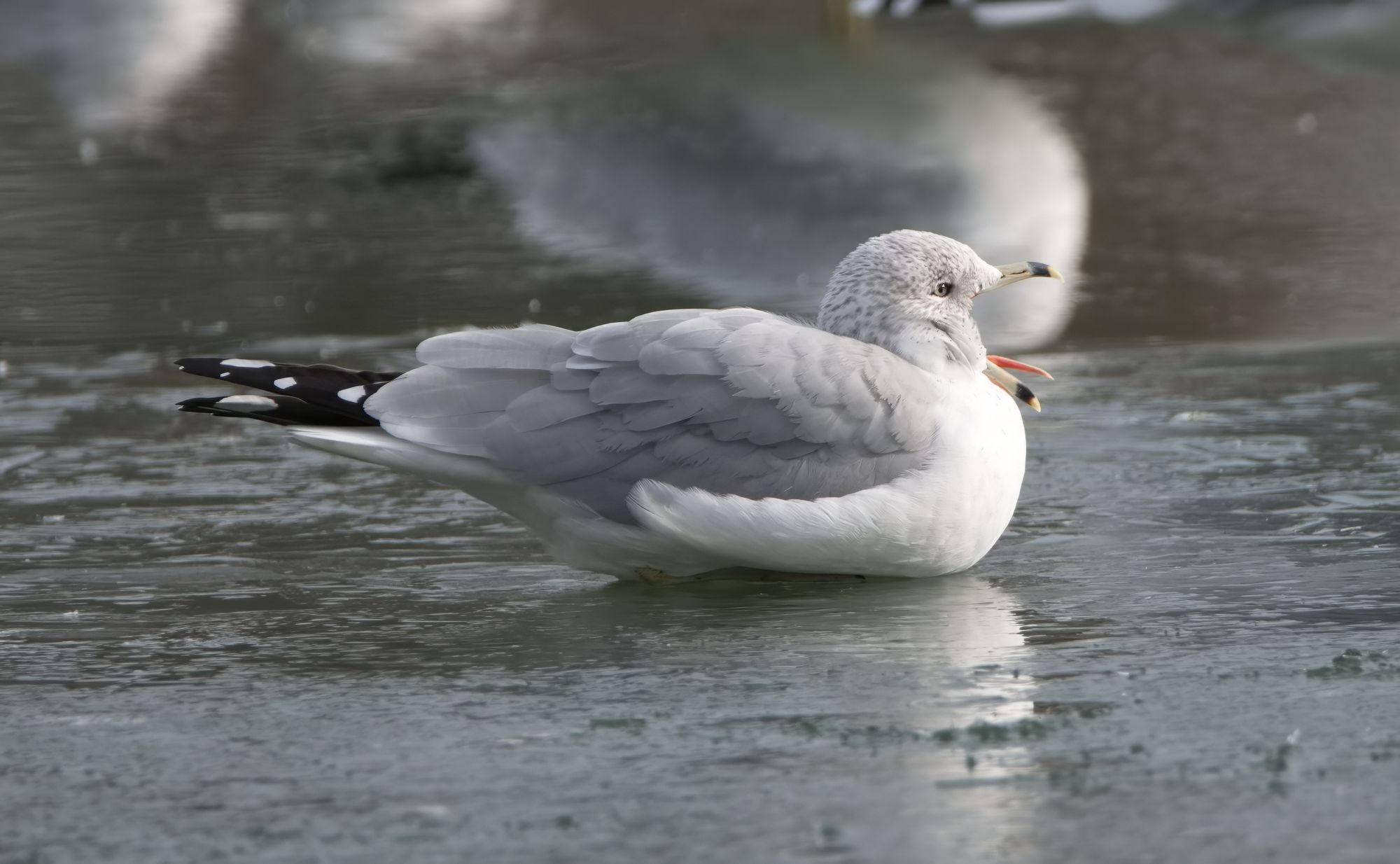Ring-billed Gull (Larus delawarensis)

The Ring-billed Gull is definitely on my list of favourite bird species. Smart, tough, environmentally-important and abundant, it is hard to believe they were almost hunted to extinction because of their pure-white feathers, which were used for clothing 8. Although many different gull species can be found throughout Ontario, this is probably "the seagull" that you see on crowded beaches and in parking lots.
The Street-sweeper

Ring-billed Gulls are like flying garbage trucks, which keep our environment clean by eating things that few animals will touch. They will consume almost anything, from garbage at a landfill to dead animals on the side of the road. At the end of harvest season, Ring-billed Gulls can also be found on farmer's fields, where they will search the soil for grubs, earthworms and other invertebrates.

By using food as a reward, researchers have also discovered that Ring-billed Gulls can solve puzzles. In one study 1, researchers placed transparent boxes in Ring-billed Gull colonies, which contained a dish with food that was only accessible by pulling a string. The researchers reported that around 75% of the gulls were curious enough to attempt this challenge, and 29% of them were able to successfully solve the test and get access to the food.
Best parents ever

There are very few "bad" bird parents (ok...maybe except for male Mallards, who just swim away once their young are born). But some bird parents are better than others, and gulls might be some of the best bird parents out there.
Gulls choose to co-parent in large colonies, with thousands of birds squished together on a single island. Being a parent on one of these islands is a tough job, as it involves being alert from all sides. While defending against predators like foxes, raccoons and coyotes, gulls nesting in colonies also have to keep an eye out for other gulls, which can kill chicks in nearby colonies for food 2.
Why, then, does this gull choose to nest in a colony, even though it seems really risky? It all comes down to safety in numbers. When faced with a predator that threatens the colony, all the gulls nesting nearby will work together and go on the defensive, giving off warning signals and harassing predators until they go away.
Long-lifers
For most birds (and other animals), there is a big difference between their average lifespan in the wild and their average lifespan in captivity.
Despite this, the Ring-billed Gull has a high life expectancy, living around 10.9 years on average 4. This lifespan is longer than other urban scavengers found in Toronto, such as the American Crow (7.3 years 5) and raptors like the Red-tailed Hawk (9.2 years 6) and Turkey Vulture (9.9 years 7)
As of 2021, the oldest Ring-billed Gull on record was born in 1992 4, making it older than the territory of Nunavut. Interestingly, this Gull was actually born at Toronto's Tommy Thompson Park, which is roughly 475km (or 295 miles) away from where it was spotted in Cleveland, Ohio.
More photos
To see more photos of this bird, and other Gulls, you can visit my website at https://gallery.alexmrb.com.
Sources
[1]Waterbird solves the string-pull test
https://doi.org/10.1098/rsos.211343
[2]A Noble Vision Of Gulls
https://www.allaboutbirds.org/news/a-noble-vision-of-gulls/
[3]Oldest Ring-billed Gull on Record Discovered by Cleveland Birder
https://www.audubon.org/news/oldest-ring-billed-gull-record-discovered-cleveland-birder
[4]BirdLife International. 2018. Larus delawarensis. The IUCN Red List of Threatened Species 2018: e.T22694317A132541912. https://dx.doi.org/10.2305/IUCN.UK.2018-2.RLTS.T22694317A132541912.en.
[5]BirdLife International. 2018. Corvus brachyrhynchos. The IUCN Red List of Threatened Species 2018: e.T22705990A131945410. https://dx.doi.org/10.2305/IUCN.UK.2018-2.RLTS.T22705990A131945410.en
[6]BirdLife International. 2016. Buteo jamaicensis. The IUCN Red List of Threatened Species 2016: e.T22695933A93534834. https://dx.doi.org/10.2305/IUCN.UK.2016-3.RLTS.T22695933A93534834.en.
[7]BirdLife International. 2018. Cathartes aura. The IUCN Red List of Threatened Species 2018: e.T22697627A131941613. https://dx.doi.org/10.2305/IUCN.UK.2018-2.RLTS.T22697627A131941613.en.
[8] Ring-billed Gull: Hinterland Who's Who. https://www.hww.ca/en/wildlife/birds/ring-billed-gull.html#sid6.